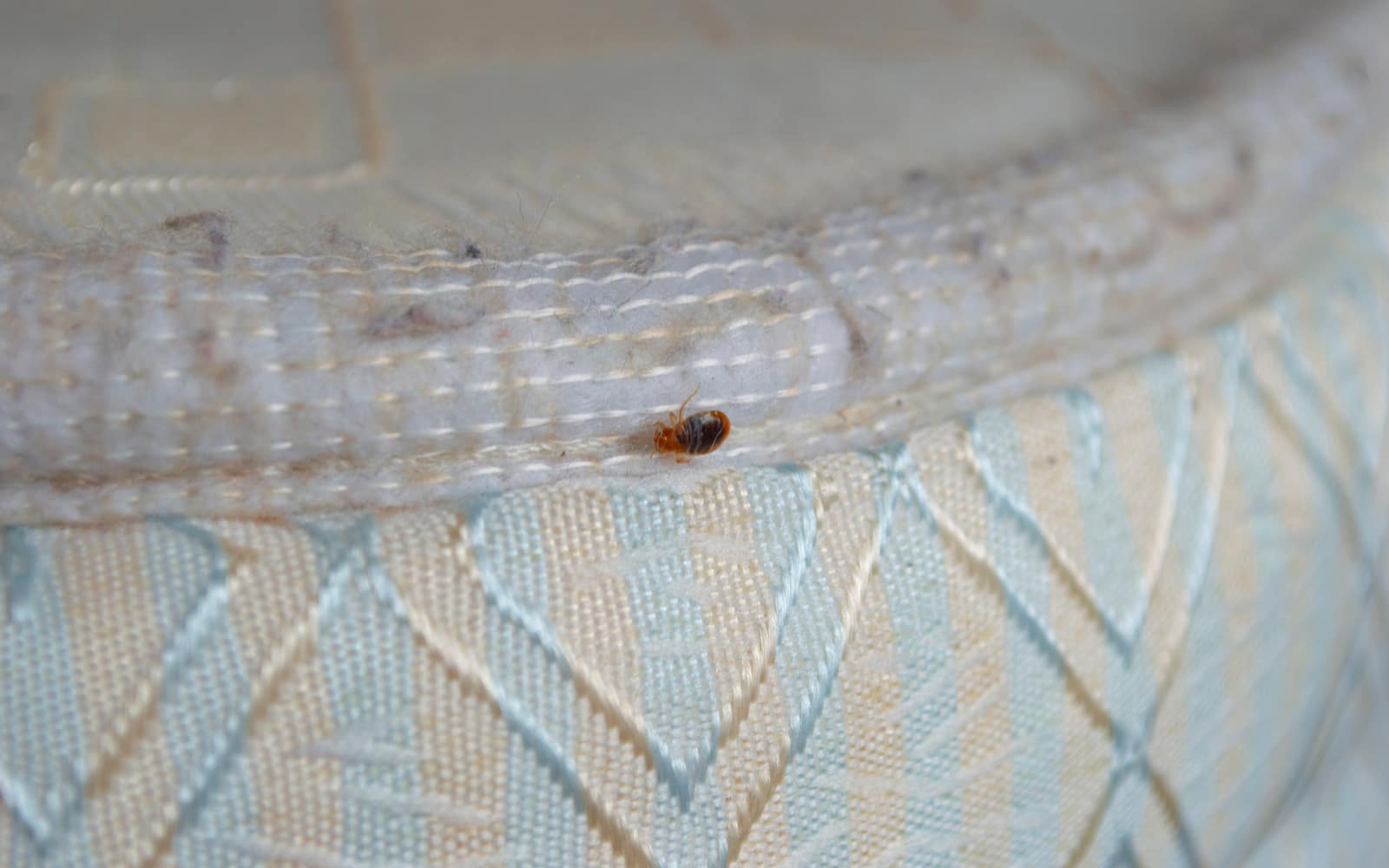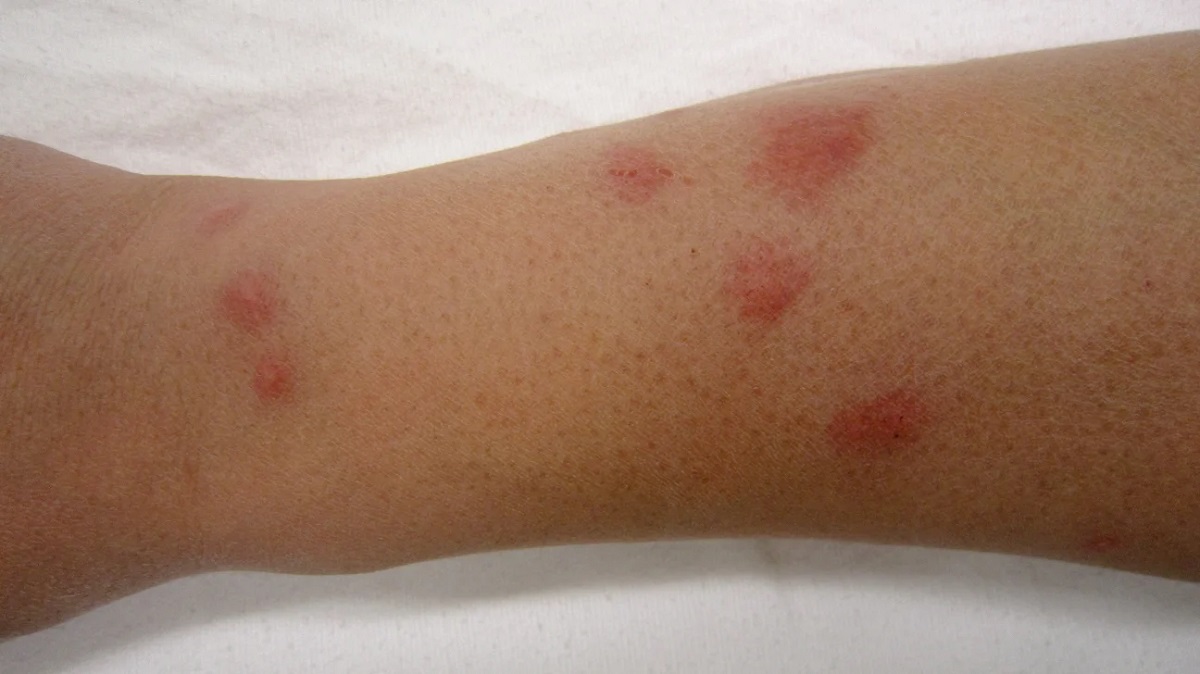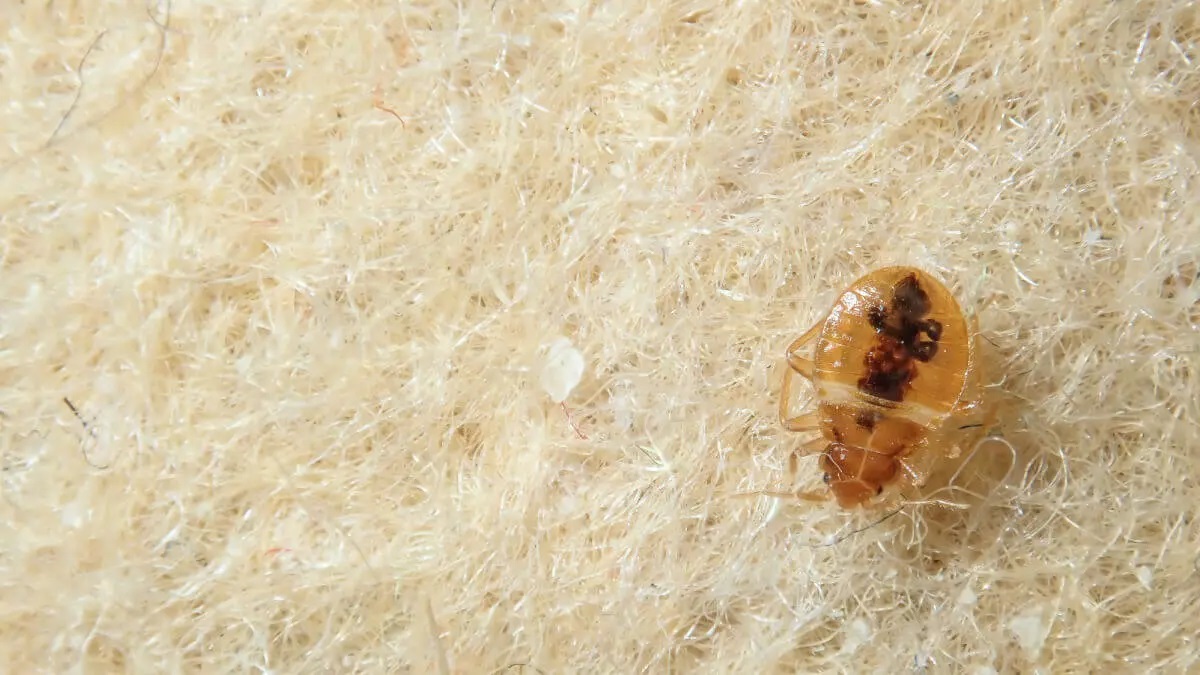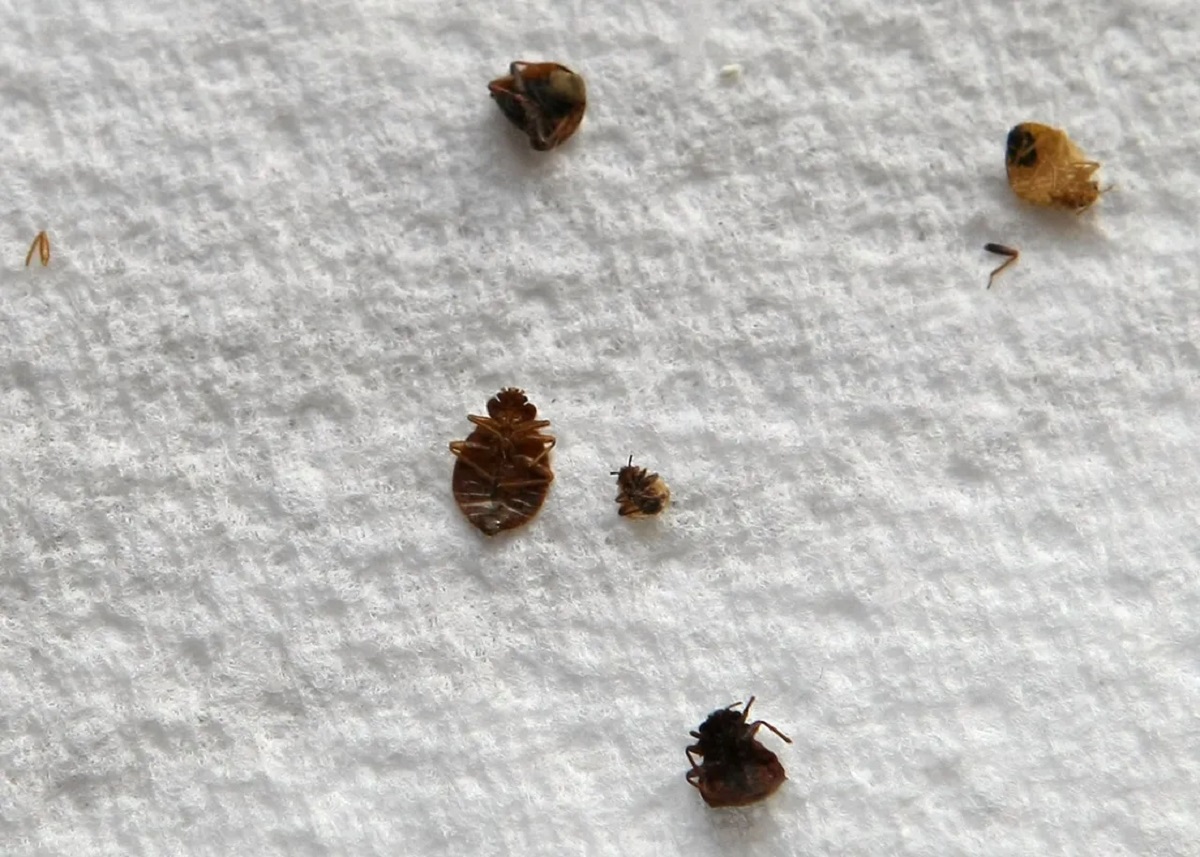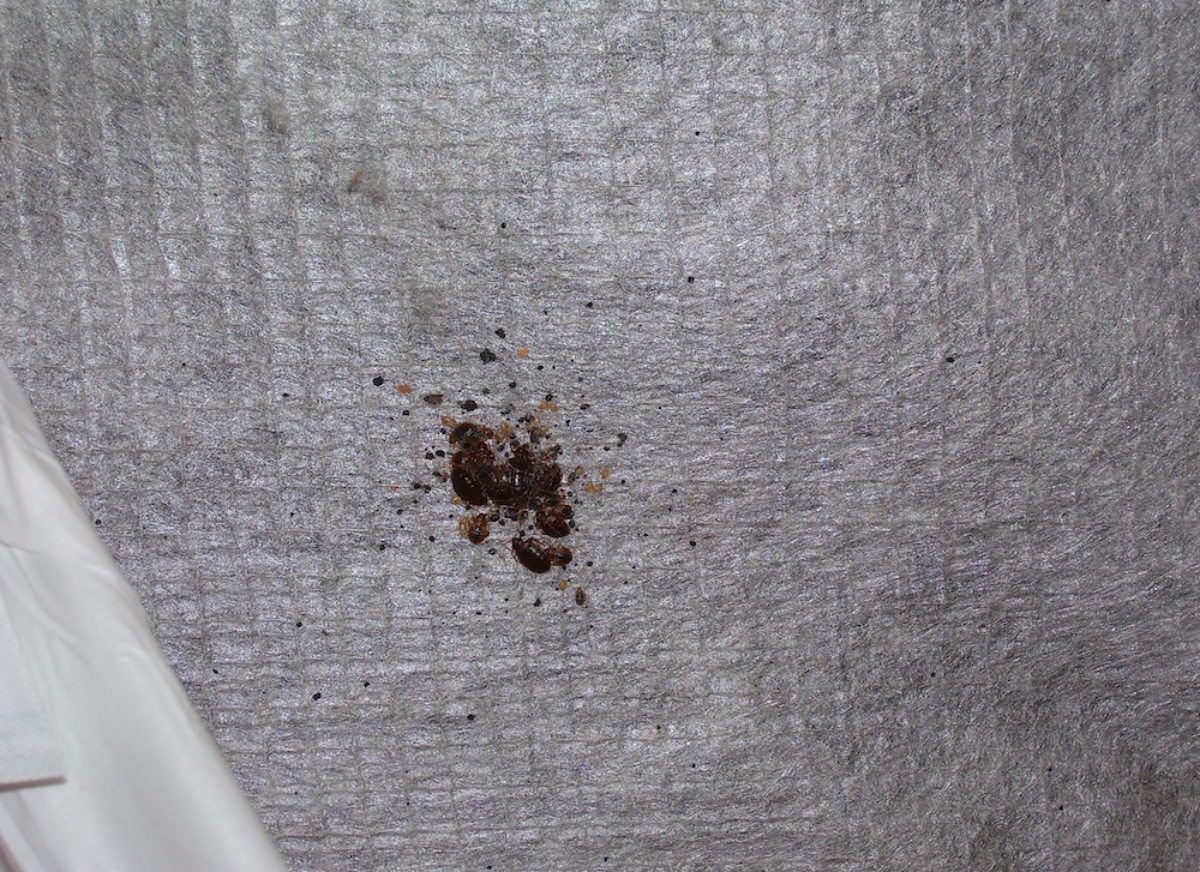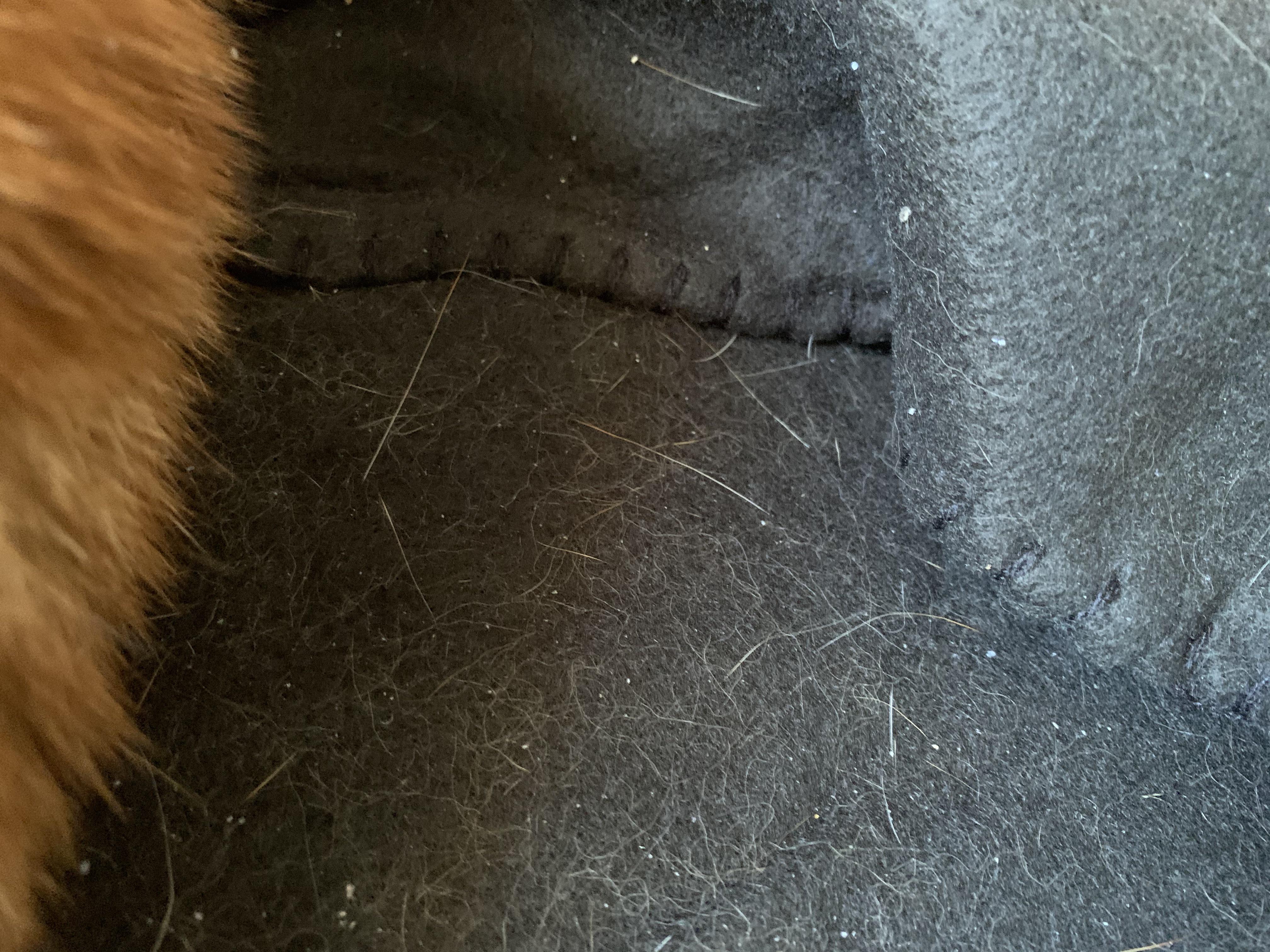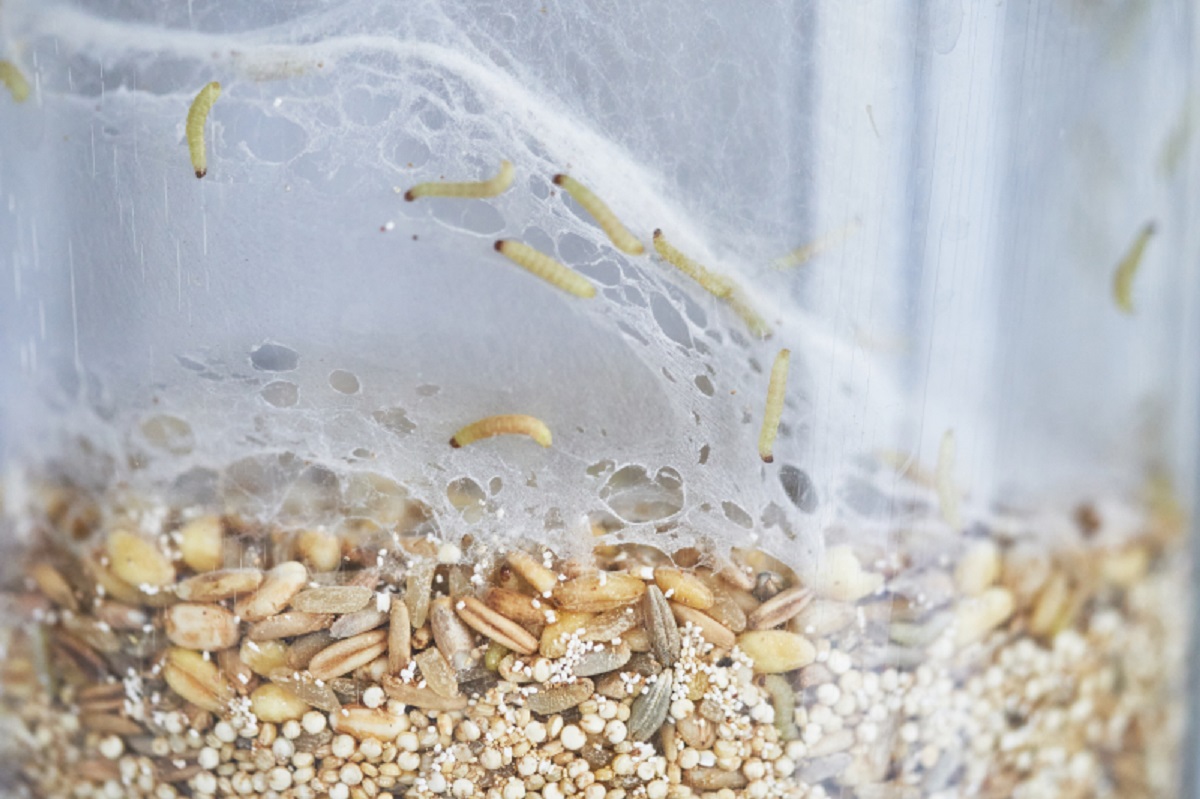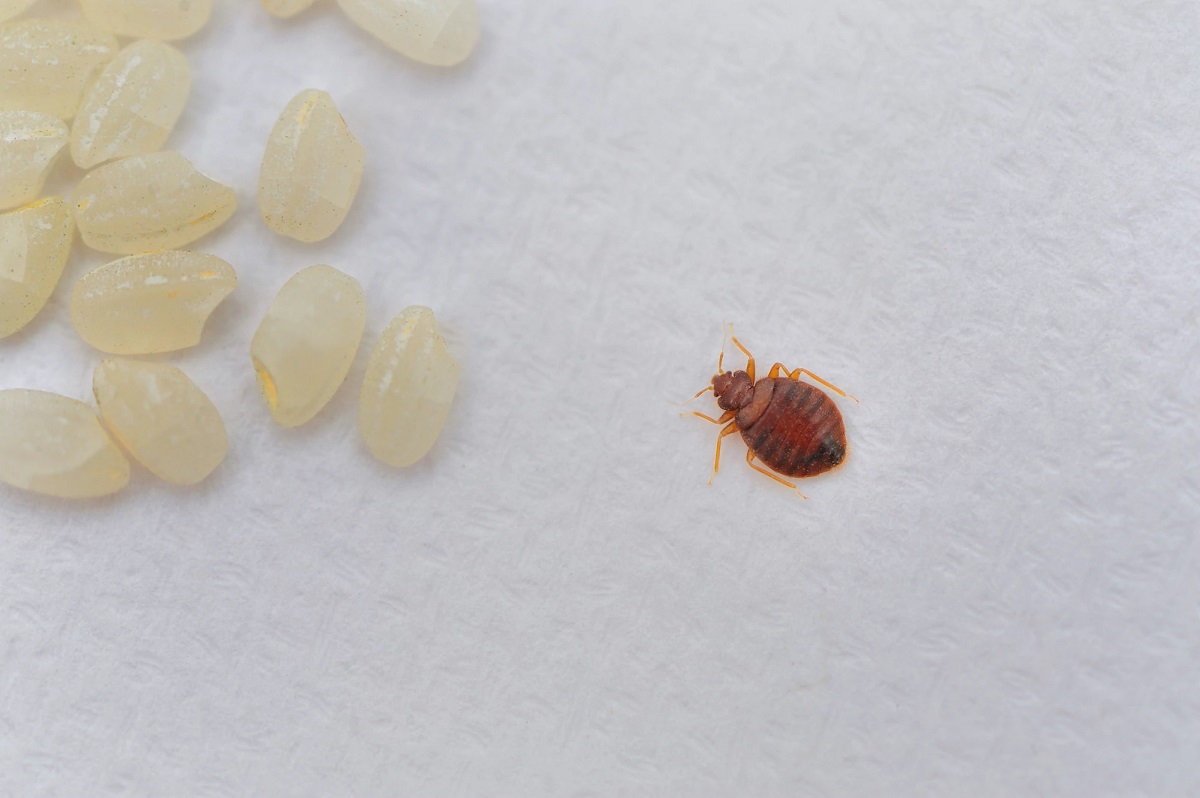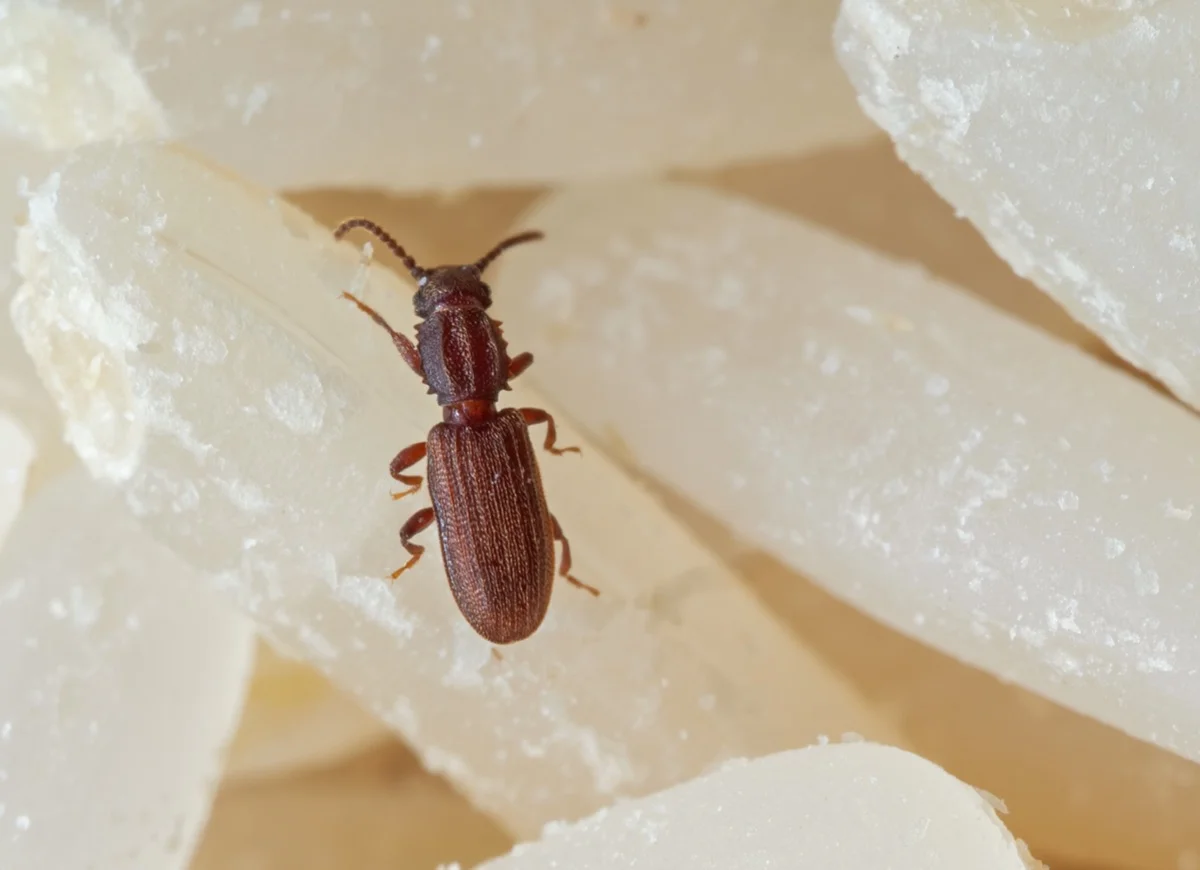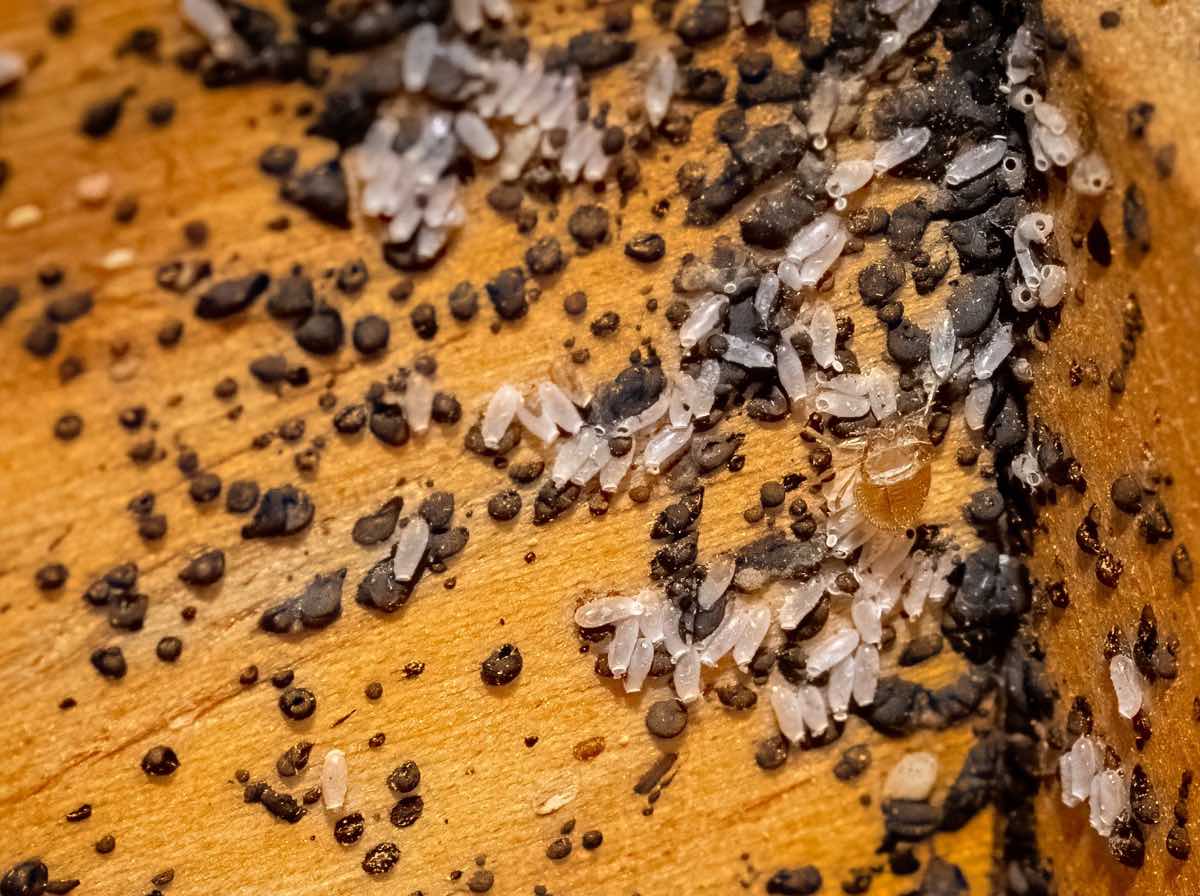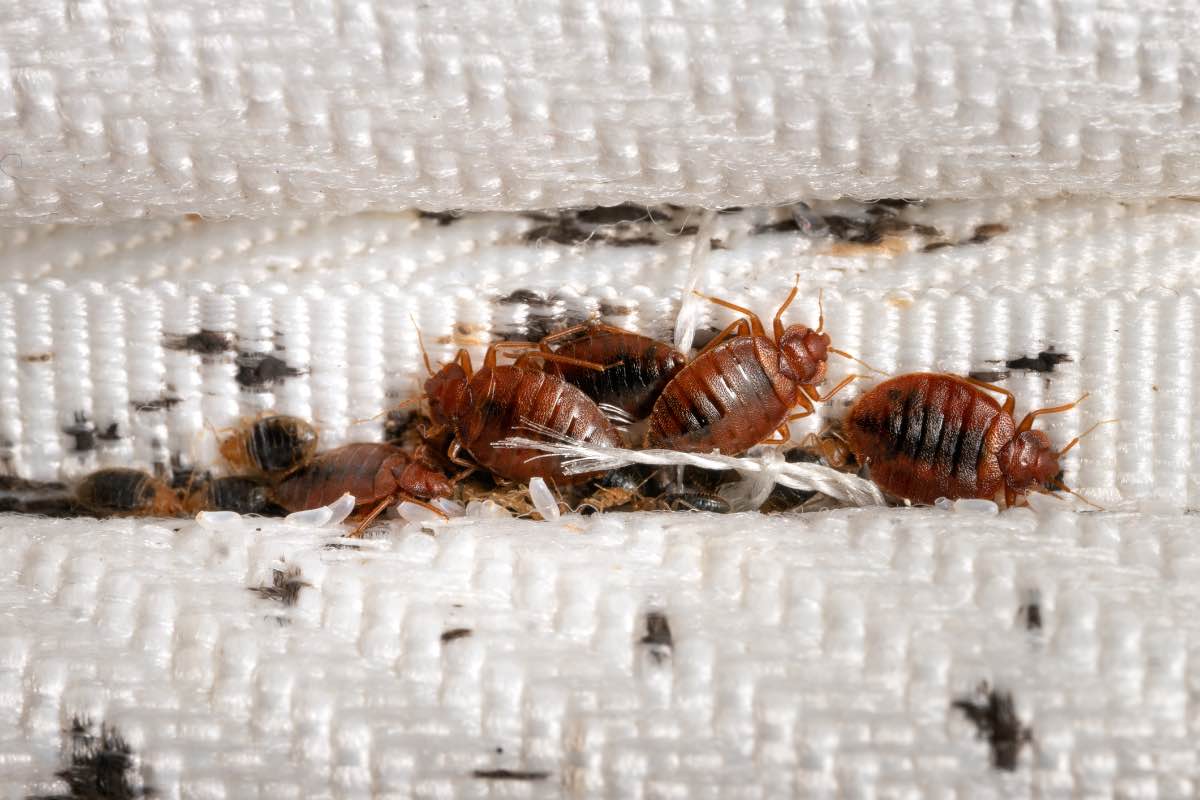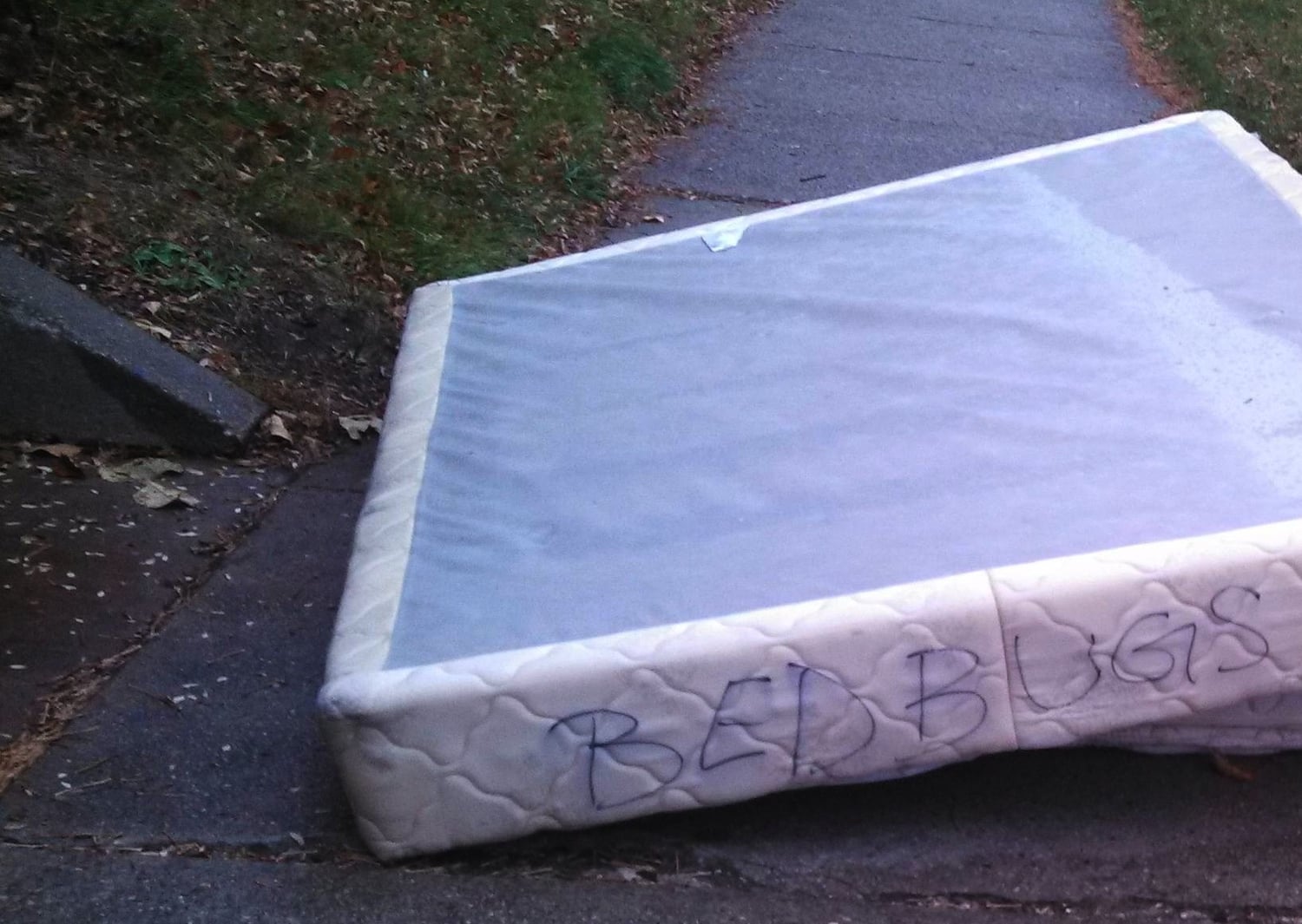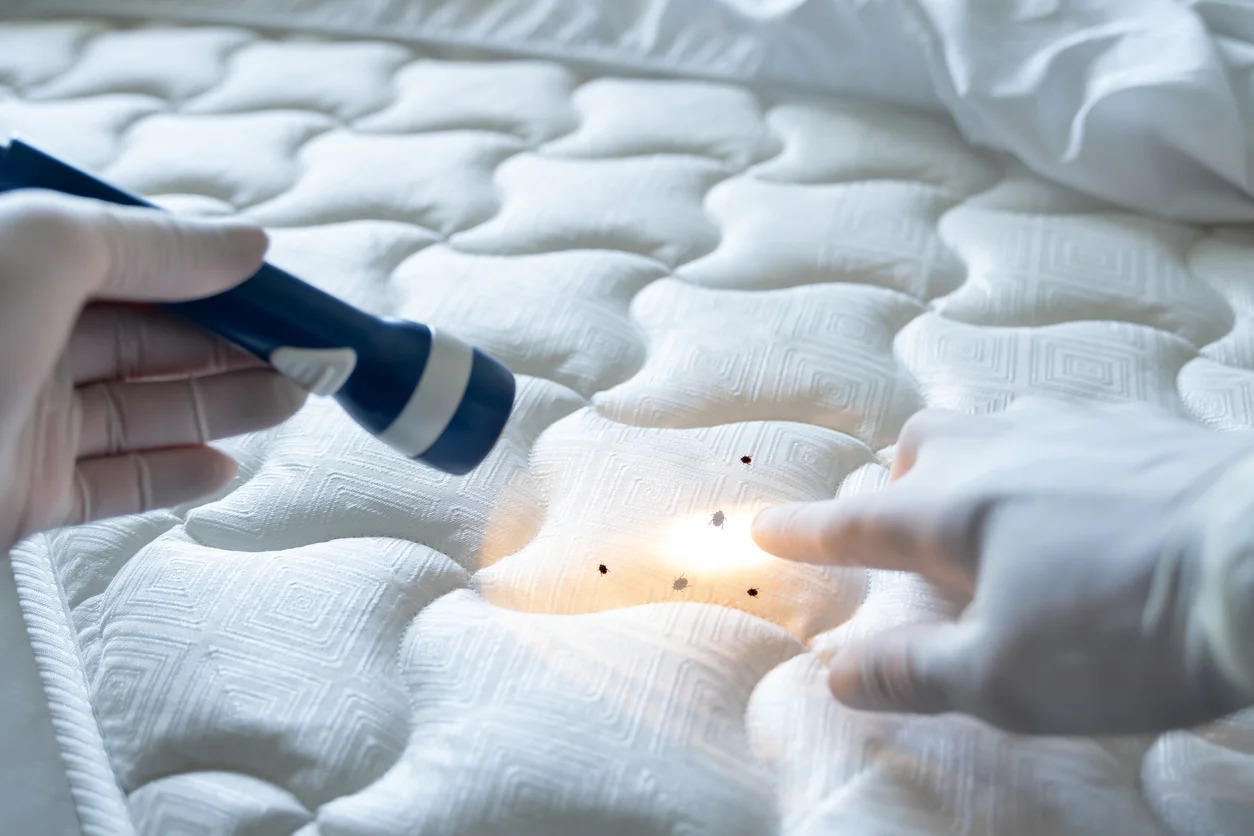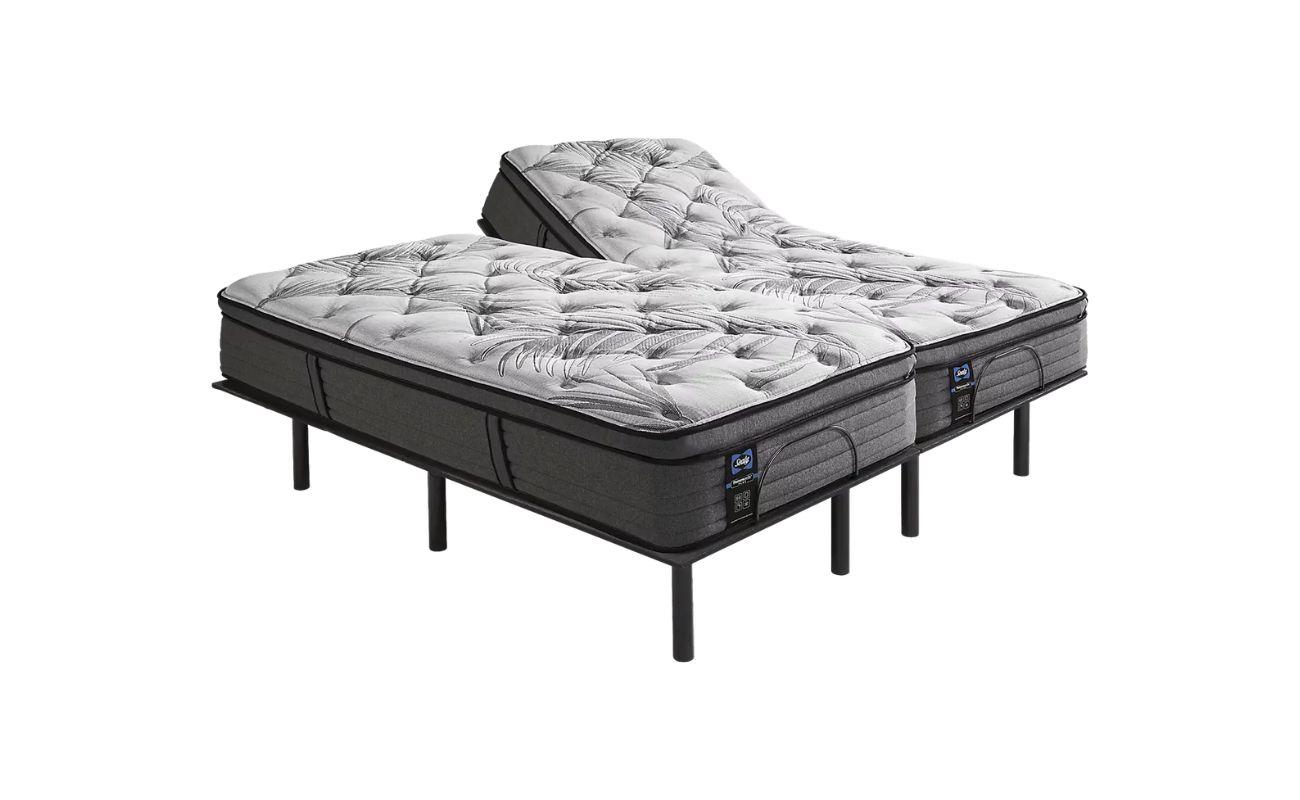Home>Furniture>Bedroom Furniture>What Do Bed Bug Eggs Look Like On A Mattress
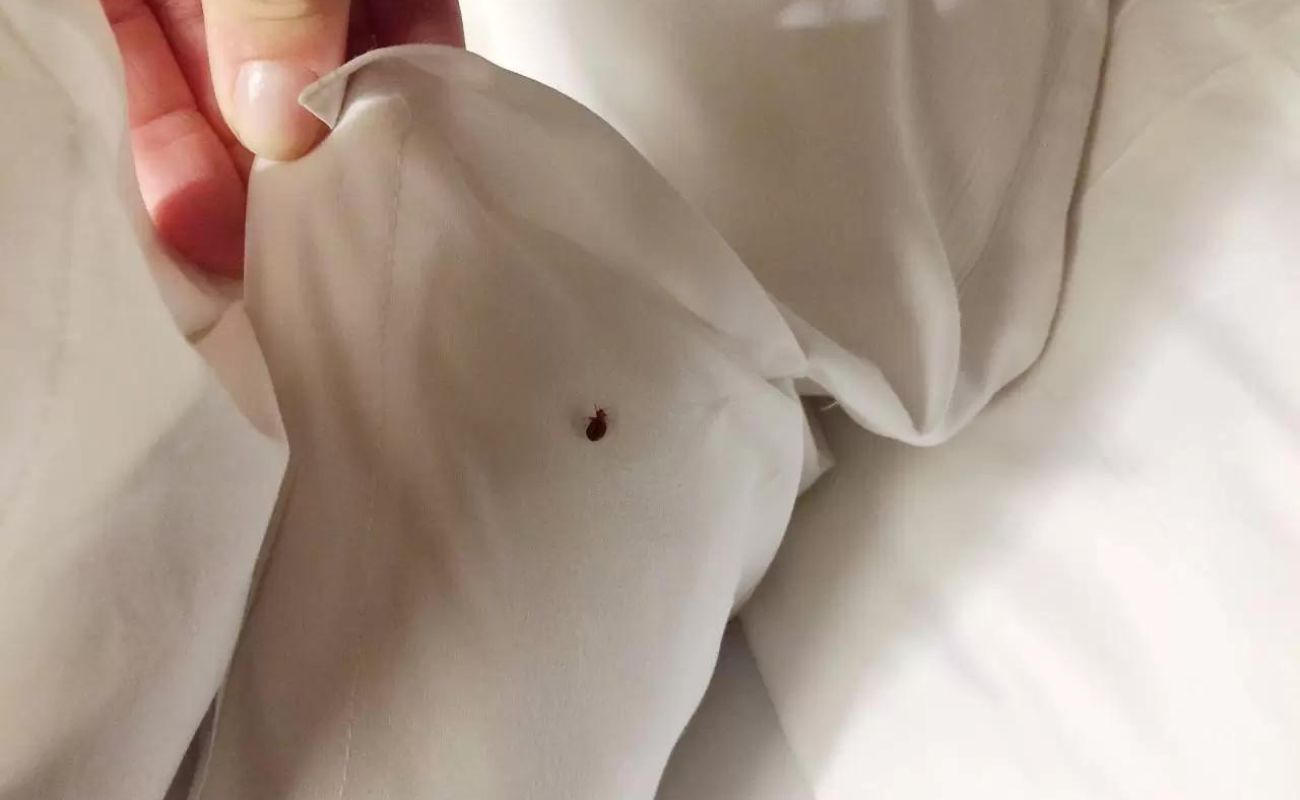

Bedroom Furniture
What Do Bed Bug Eggs Look Like On A Mattress
Modified: February 25, 2024
Discover what bed bug eggs look like on a mattress and learn how to spot them. Protect your bedroom furniture from these pesky pests.
(Many of the links in this article redirect to a specific reviewed product. Your purchase of these products through affiliate links helps to generate commission for Storables.com, at no extra cost. Learn more)
Introduction
Welcome to the world of bedroom furniture, where comfort meets style and functionality. When it comes to creating the perfect sleep sanctuary, one of the most essential pieces is the mattress. However, what happens when these cozy havens become infested with bed bugs?
Bed bugs are small, parasitic insects that feed on human blood. While they are a nuisance and can cause discomfort, it is their ability to reproduce rapidly that poses a serious threat. Understanding the life cycle of bed bugs is crucial in tackling infestations effectively. In particular, identifying and eliminating bed bug eggs is a vital step in the eradication process.
In this article, we will delve into the world of bed bug eggs and explore how they appear on a mattress. We will discuss the characteristics of these eggs, how to identify them, and the measures you can take to remove them. Additionally, we will touch on prevention techniques and treatment options to help you keep your bedroom free from these unwanted invaders.
So sit back, relax, and join us on this journey of understanding bed bug eggs and how they can affect the comfort and cleanliness of your mattress.
Key Takeaways:
- Don’t let bed bug eggs ruin your sleep sanctuary. Learn to identify, remove, and prevent these unwelcome pests from infesting your mattress and bedroom furniture.
- Early detection and proactive measures are key in combating bed bug eggs. Regular inspections, thorough cleaning, and professional help can help you maintain a clean and comfortable sleeping environment.
Read more: What Do Bed Bugs Look Like In A Mattress
Understanding Bed Bug Eggs
Before we dive into the appearance and identification of bed bug eggs on a mattress, let’s first understand what bed bug eggs are and how they fit into the life cycle of these pesky insects.
Bed bugs, scientifically known as Cimex lectularius, go through a metamorphosis process known as incomplete metamorphosis. This means that they have three life stages: eggs, nymphs, and adults. The eggs are the beginning of this life cycle and are the first sign of a potential infestation.
Once a female bed bug mates, she will lay eggs within one to two weeks. These eggs are tiny, ranging from about 1mm to 1.5mm in size, and they are typically white or translucent in color. A single female bed bug can lay anywhere from one to five eggs per day, adding up to hundreds of eggs in her lifetime.
The bed bug eggs are laid individually or in small clusters and are usually deposited in hidden and protected areas close to their food source, which is often the mattress or other furniture in the bedroom. These eggs have a sticky substance that helps them adhere to surfaces and stay in place.
It is important to note that bed bug eggs are very resistant to external threats. They have a hard outer shell that provides protection against crushing, dehydration, and many commonly used pesticides. This resilience allows the eggs to survive for several weeks, making them a challenging obstacle in the fight against bed bug infestations.
Understanding the life cycle of bed bugs, with a particular focus on their eggs, is essential for effective treatment and prevention. By identifying and eliminating the eggs, you can disrupt the breeding cycle and take a significant step towards eliminating these unwelcome pests from your mattress.
Appearance of Bed Bug Eggs on a Mattress
Now that we have a basic understanding of bed bug eggs and their importance in the life cycle of these pests, let’s explore how they appear on a mattress. Being able to identify bed bug eggs is crucial in detecting and dealing with an infestation early on.
Bed bug eggs are minuscule and can be difficult to spot with the naked eye. They are oval-shaped and have a whitish or translucent appearance. The eggs are often compared to grains of rice or apple seeds due to their size and shape.
When checking for bed bug eggs on a mattress, it’s important to pay attention to certain areas where these pests tend to hide and lay their eggs. Common hotspots include the seams and folds of the mattress, the box spring, and the crevices of wooden bed frames.
The eggs are typically laid in clusters or lines, usually consisting of 10 to 50 eggs in each batch. As bed bugs molt and grow, they shed their exoskeletons, and these discarded shells can also be found near the eggs.
One of the challenges in identifying bed bug eggs is their color. While they are often translucent or whitish in appearance, newly laid eggs can appear almost transparent. As they age, the eggs may become slightly darker, taking on a more yellowish hue.
Another characteristic that sets bed bug eggs apart is their sticky texture. This adhesive substance helps the eggs adhere to surfaces and prevents them from being easily dislodged or removed. If you come across what appears to be a cluster of tiny, oval-shaped objects stuck to your mattress, there’s a high possibility that you have stumbled upon bed bug eggs.
It’s important to note that while bed bug eggs are commonly found on mattresses, they can also be found in other areas of the bedroom, such as cracks in the walls, behind baseboards, or even inside electrical outlets. Conduct a thorough inspection of all potential hiding spots to ensure you identify all the eggs and potential infestation sites.
Armed with the knowledge of how bed bug eggs appear on a mattress, you have a better chance of early detection and prompt action. Identifying these eggs is the first step towards eradicating bed bugs and ensuring a peaceful night’s sleep.
How to Identify Bed Bug Eggs
Identifying bed bug eggs is crucial in effectively addressing a potential infestation. While they may be small and challenging to spot, there are several signs and indicators that can help you identify these tiny pests.
Here are some tips on how to identify bed bug eggs:
- Inspect your mattress: Begin by thoroughly examining your mattress, paying close attention to the seams, tufts, and folds. Use a flashlight and a magnifying glass to carefully look for any signs of eggs or egg casings.
- Look for translucent or whitish eggs: Bed bug eggs are usually translucent or whitish in color, and they have an oval shape. They are about 1mm to 1.5mm in length, and they may resemble tiny grains of rice or apple seeds.
- Check for clusters or lines: Bed bugs often lay their eggs in clusters or lines, typically containing 10 to 50 eggs. Look for these characteristic groupings in hidden areas of your mattress, such as along the seams or in the crevices.
- Look for egg casings: As bed bug eggs hatch, they leave behind empty egg casings. These casings are translucent and have a similar shape to the eggs themselves. Finding these casings is a strong indicator of a bed bug infestation.
- Observe for a sticky residue: Bed bug eggs have a sticky substance that helps them adhere to surfaces. If you notice a cluster of small, oval-shaped objects stuck to your mattress or other furniture, it may be a sign of bed bug eggs.
- Use a bed bug detector: If you suspect a bed bug infestation but are having trouble identifying the eggs, you can use specialized bed bug detectors. These devices are designed to attract bed bugs, including the eggs, using heat, CO2, or other lures.
- Consult a professional: If you are unsure about your ability to identify bed bug eggs or suspect a severe infestation, it’s best to consult a professional pest control expert. They have the expertise and tools to accurately identify and treat bed bug problems.
Remember, early detection of bed bug eggs is crucial in preventing a small infestation from becoming a major problem. Regular inspections and vigilance are key in maintaining a bed bug-free environment.
Inspect your mattress and bedding regularly for small, white, oval-shaped eggs, about the size of a pinhead. These are bed bug eggs and can be found in seams, crevices, and other hidden areas. If you suspect an infestation, contact a professional for treatment.
Removing Bed Bug Eggs from a Mattress
Discovering bed bug eggs on your mattress can be distressing, but with the right approach, you can effectively remove them and prevent further infestation. It’s important to act promptly and diligently to ensure the complete removal of both the eggs and the adult bed bugs.
Here are some steps to remove bed bug eggs from a mattress:
- Vacuum the mattress: Begin by vacuuming your mattress thoroughly, focusing on the seams, tufts, and crevices where bed bugs and their eggs are likely to hide. Use a crevice tool to reach into tight spaces and suction up any eggs or nymphs.
- Use a stiff brush: After vacuuming, use a stiff brush to scrape along the seams and fabric of the mattress, loosening any remaining eggs. This will make it easier to vacuum them up.
- Steam clean the mattress: Bed bug eggs are sensitive to high temperatures, so using a steam cleaner on your mattress can be an effective way to kill both eggs and adult bugs. Ensure that the steam reaches a temperature of at least 140°F (60°C) to ensure effective extermination.
- Wash bedding and linens: Remove all bedding, including sheets, pillowcases, and mattress covers, and wash them in hot water. Use the highest heat setting available to kill any hidden bed bugs or eggs.
- Inspect and treat the surrounding area: Bed bugs can easily spread beyond the mattress, so it’s important to inspect and treat the surrounding area. Check the bed frame, headboard, and nearby furniture for any signs of infestation. Vacuum and steam clean these areas as well.
- Encase the mattress: Consider using a bed bug encasement for your mattress. These specially designed covers encase the entire mattress, preventing bed bugs from entering or escaping. They also make it easier to spot and remove any future infestations.
- Consult a professional: If the infestation is severe or you are unable to eliminate the bed bug eggs on your own, it’s best to seek professional help. Pest control professionals have the knowledge, experience, and specialized treatments to effectively remove bed bugs from your mattress and home.
Remember to be thorough in your efforts and repeat these steps periodically to ensure that all bed bug eggs are eradicated. Additionally, implementing preventive measures such as regular cleaning, inspecting second-hand furniture, and maintaining a clutter-free environment can help prevent future infestations.
By following these steps and maintaining a proactive approach, you can effectively remove bed bug eggs from your mattress and sleep comfortably, knowing that your sleeping space is free from these unwanted pests.
Read more: What Do Bed Bugs On A Mattress Look Like
Prevention and Treatment of Bed Bug Infestations
Preventing and treating bed bug infestations is crucial in maintaining a clean and comfortable sleeping environment. While these pests can be challenging to eradicate completely, there are several measures you can take to minimize the risk of infestation and address it effectively if it occurs.
Here are some preventive and treatment strategies for bed bug infestations:
- Regularly inspect your mattress and bedding: Conduct periodic inspections of your mattress, bedding, and surrounding furniture to look for any signs of bed bugs, including eggs, fecal stains, or discarded exoskeletons.
- Be cautious when traveling: Bed bugs can hitchhike in luggage, clothing, or other personal belongings. When staying in hotels or traveling, inspect your accommodations for any signs of bed bugs. Keep your luggage elevated and away from the bed.
- Seal cracks and crevices: Seal any cracks or crevices in your bedroom, including those in walls, baseboards, and furniture, to prevent bed bugs from finding hiding spots.
- Reduce clutter: Minimize clutter in your bedroom, as bed bugs can find more places to hide in a cluttered environment.
- Wash and dry bedding on high heat: Regularly wash and dry your bedding, including sheets, pillowcases, and mattress covers, on the highest heat setting to kill any potential bed bugs or eggs.
- Use mattress encasements: Consider using mattress encasements designed specifically to keep bed bugs out. These encasements cover the entire mattress, making it more difficult for bed bugs to infest and lay eggs.
- Consult a professional pest control service: If you suspect a bed bug infestation or have difficulty eliminating the pests on your own, seek the help of a professional pest control service. They have the expertise and tools to effectively treat the infestation.
- Follow professional treatment recommendations: If you do enlist the help of a professional, make sure to follow their treatment recommendations thoroughly. This may involve multiple treatments and ongoing monitoring to ensure complete eradication of bed bugs.
Remember, prevention is key when it comes to bed bugs. Taking proactive measures to minimize the risk of infestation, such as regular inspections and maintaining a clean sleeping environment, can save you from the hassle and discomfort of dealing with these pests.
If you do discover bed bug eggs or signs of an infestation, it’s important to act swiftly and diligently to prevent the problem from worsening. The combination of thorough cleaning, targeted treatments, and professional help, if necessary, will help you reclaim your bedroom and restore peace of mind.
Conclusion
Bed bug eggs on a mattress are not only unsightly but also indicative of a potential infestation. Knowing how to identify and remove these eggs is essential for maintaining a clean and healthy sleeping environment. By understanding the appearance and characteristics of bed bug eggs, you can effectively detect and address the issue before it becomes a full-blown infestation.
Regular inspections, vacuuming, and steam cleaning are key steps in removing bed bug eggs from a mattress. Additionally, washing bedding on high heat, sealing cracks and crevices, and minimizing clutter in the bedroom can help prevent future infestations. It’s also important to consult professional pest control services for severe infestations or if you’re unsure about your ability to handle the problem on your own.
Remember, prevention is the best approach when it comes to bed bugs. Being diligent in your cleaning routines, practicing caution when traveling, and regularly inspecting your sleeping area can go a long way in keeping these unwanted pests at bay.
Dealing with bed bug eggs may seem daunting, but with the right knowledge and action, you can restore your mattress to its clean and comfortable state. By taking the necessary steps to remove bed bug eggs and implementing preventive measures, you can enjoy a peaceful and restful night’s sleep without the worry of bed bug infestations.
So, stay vigilant, educate yourself, and take the necessary steps to keep your mattress and bedroom free from bed bug eggs. Create a sanctuary where you can unwind and recharge, knowing that you’ve taken proactive measures to eliminate these unwelcome pests.
Frequently Asked Questions about What Do Bed Bug Eggs Look Like On A Mattress
Was this page helpful?
At Storables.com, we guarantee accurate and reliable information. Our content, validated by Expert Board Contributors, is crafted following stringent Editorial Policies. We're committed to providing you with well-researched, expert-backed insights for all your informational needs.
